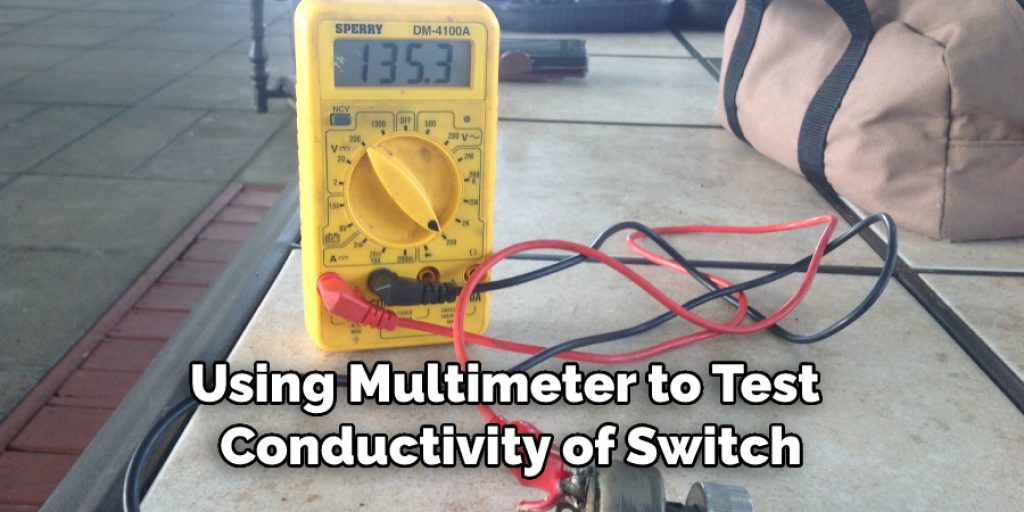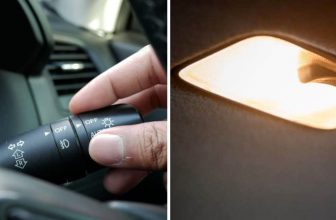How to Check a Ignition Switch
If you’re having trouble starting your car or if the security light is flashing, it might be time to check your ignition switch. An ignition switch is a device that sends an electrical current from the battery to the starter motor when you turn on the key. If this switch fails, then your car won’t start and will need to be diagnosed by a professional.

However, there are some simple steps that you can take at home in order to diagnose whether or not it’s really the ignition switch causing problems with your vehicle. With just a few tools and supplies and this guide on, you can learn how to check a ignition switch yourself without breaking the bank!
What is a Ignition Switch?
The ignition switch is part of your vehicle’s electrical system and serves as a point of connection between the battery and the starter motor. When you turn the key in the ignition, it sends an electrical current to power up the starter motor, which then turns the engine crankshaft to start your engine. If this switch fails or gets damaged, it won’t be able to send the necessary current, and your car won’t start.
Why Do You Need to Check Ignition Switch?
1. To Prevent Problems
It’s important to check your ignition switch if you’re having trouble starting your vehicle or if the security light is flashing. A faulty ignition switch can lead to all sorts of problems, including stalling engines and reduced fuel efficiency—or even cause total engine failure.
2. To Diagnose the Problem
Checking the ignition switch is a great first step in diagnosing any electrical issues with your vehicle. It can help you determine whether or not it’s really the switch that’s causing problems, as opposed to another part of the electrical system.
Required Materials
In order to check an ignition switch, you will need the following materials:
- Pliers
- Multimeter
- Spare Key Fob (if relevant)
- Flathead Screwdriver
10 Instructions on How to Check a Ignition Switch
1. Locate the Ignition
Start by locating the ignition switch in your vehicle. It is usually located near the steering wheel. The switch typically has a keyhole in it.

2. Disconnect the Battery
Before proceeding, make sure to disconnect the battery from your vehicle so you can safely work on the ignition switch without any danger of electric shock or damage. If you don’t feel comfortable doing this, take your vehicle to a professional for assistance.
3. Remove the Switch
Use a flathead screwdriver to remove the switch from its holder or bracket. Depending on the model and make of your vehicle, you may need to use pliers to help with the removal process. Be sure to exercise caution when handling the switch, as it may be sensitive to damage.
4. Inspect the Switch
Once you have removed the switch, inspect it for any signs of wear and tear or damage. If there is any visible corrosion or broken parts, this could indicate that a replacement is necessary. The switch should be securely in place, with all moving parts functioning smoothly.
5. Check Connections
Using your multimeter, check the connections on the switch to ensure that they are not loose or corroded. If any of the connections have become loose over time, you may need to re-attach them before continuing. The multimeter should also indicate whether the switch is working correctly or not.
6. Test Conductivity
Using your multimeter, test the conductivity of the switch to make sure that it is functioning properly. You may need to fiddle with the connections on the switch while doing this in order to find the right level of conductivity you are looking for.

7. Test the Wires
Next, test the wires coming into and out of the switch to make sure they are functioning correctly. You can do this by connecting the multimeter to each wire and checking its voltage readings. The wire should be able to maintain a consistent level of voltage as it is connected.
8. Test the Key Fob (if relevant)
If your vehicle has an ignition key fob, you will also need to check it for functionality. Place the fob in its holder and press the buttons on it to ensure that they are working correctly. If the fob has gone bad, you may need to replace it.
9. Check the Ignition
Once all of the above steps have been completed, you can now check the actual ignition itself. Turn the switch on and off multiple times to ensure that it is working correctly. The key should be able to start and stop your vehicle without any issues.
10. Reattach the Ignition
Once you have verified that everything is in working order, you can now reattach the ignition switch to its holder or bracket. Make sure it is firmly in place before attempting to start your vehicle again.
After following these steps, you should be able to confidently verify whether or not your ignition switch is working properly. If any of the steps seem too complicated, take your vehicle to a professional for assistance.
8 Tips to Troubleshoot Your Ignition Problem
- Check the battery connections. If the connections are loose, tighten them to ensure that power is flowing properly. The connection should be clean as well, free of dirt and corrosion. It is also important to check the battery’s charge. If it is low, it needs to be recharged or replaced.
- Check the ignition switch for damage and corrosion. The ignition switch should be free of any wear or tear and should not feel loose when turned on and off. Corrosion can also cause a shortage in the system and can be easily removed with a wire brush.
- Make sure the wiring is in good condition. Check for frays, shorts, or broken wires, and replace them if necessary. If the wiring is corroded, clean it with a wire brush.
- Test the starter and alternator for proper operation. Both the starter and alternator should be able to turn freely without any grinding or jerking. If the problem persists after cleaning out any corrosion, you may need to replace them both.
- Inspect all of the spark plugs and look for any signs of damage. If a plug is worn or damaged, it will need to be replaced. It may also be necessary to replace multiple spark plugs at once if they are all showing signs of wear.
- Check the fuel filter for blockage. If the filter is clogged with dirt or debris, it will need to be replaced. That’s why it is important to change the fuel filter on a regular basis.
- Make sure the throttle body and intake manifold are clean and free of any dirt or debris. Corrosion in these areas can cause a misfire and poor performance from your vehicle. The dirt may need to be cleaned out with a wire brush or compressed air.
- If all else fails, it’s time to take your vehicle to a professional mechanic for further diagnostics and repairs. A qualified technician can determine the source of the ignition problem and make any necessary repairs or replacements.
- Following these tips should help you diagnose and troubleshoot any potential ignition problems. Knowing how to check a ignition switch is an important part of keeping your vehicle in top shape and can save you money by avoiding costly repairs down the line.

Frequently Asked Questions
What are the Best Maintenance Tips for Ignition Switch?
The best maintenance tips for ignition switches include regularly checking the wires and connections, as well as replacing any worn or frayed parts. It’s also important to make sure the connections are secure and that all safety features are functioning properly. Additionally, be sure to check the battery and spark plug condition periodically. Finally, it’s a good idea to have an experienced mechanic examine the ignition switch at least once a year.
What are the Symptoms of a Faulty Ignition Switch?
If you believe your ignition switch may be faulty, there are a few tell-tale signs. The first symptom is difficulty starting the engine, either an inability to start it at all or difficulty with the engine running smoothly.
Additionally, you may notice odd electrical issues like strange sounds coming from your vehicle, dashboard lights flickering, or other electrical abnormalities. If you experience any of these symptoms, it’s important to have the issue addressed quickly by a professional mechanic.

Conclusion
Maintaining your ignition switch is critical to the safety of yourself and others. Regularly checking wires, connections, battery, and spark plug conditions can help extend its life while preventing costly repairs down the road.
If you experience any difficulty starting your engine or odd electrical issues such as strange sounds coming from your vehicle or dashboard lights flickering, it’s important to have these symptoms addressed quickly by a professional mechanic.
Taking care of an ignition switch issue right away will ensure that everyone stays safe on the roads and avoid expensive repair bills in the future. With these tips on how to check a ignition switch and regular maintenance checks, and quick action when something doesn’t seem quite right with your car’s ignition system, you can keep yourself driving safely for many years to come.




